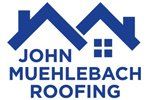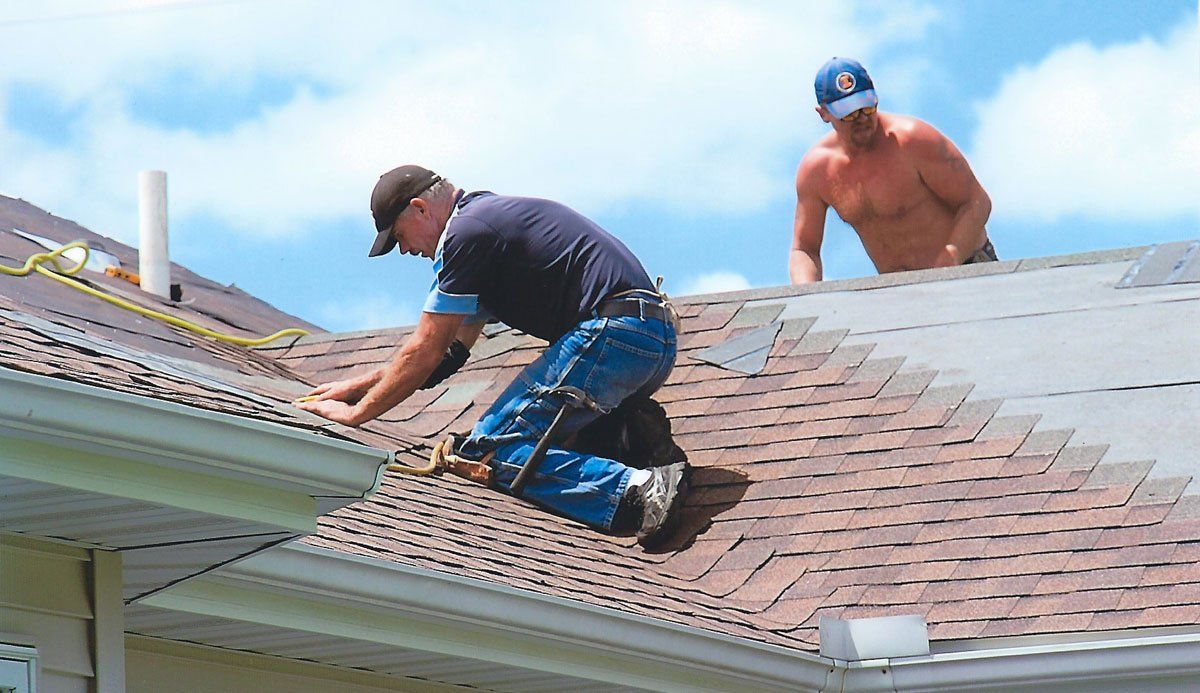Products
Products We Love
Sample Title
CertainTeed—Muehlebach Roofing is a certified CertainTeed roofing contractor. CertainTeed uses quality building materials and industry best practices. They offer an extensive training program to keep our team performing at the peak of technological advances and safety advancements.
Owens Corning Roofing—Muehlebach Roofing also offers Owens Corning Roofing products like the duration series and high-performance roofing shingles.
- Architectural Shingles
Architectural shingles are considered high end asphalt shingles due to their quality and distinctive textured look. Architectural shingles are also known as three dimensional shingles or laminate shingles. Architectural shingles were introduced to the home construction market in the 1970’s in the continued effort to produce an asphalt shingle product that had the higher end quality look of slate or cedar wood shake shingles, without the negatives of breakage, insect damage or weight. Today architectural shingles come in a wide variety of colors, styles, and warranties.
Architectural shingles have a unique visual appearance. Instead of a running row pattern that is observed with 3-tab shingles, architectural shingles have a cedar shake texture appearance that give a more dramatic look to a home. Architectural shingles are also excellent for hiding roof imperfections due to their textured look. Many home builders prefer to use them today due to this benefit alone. In addition, from some builders’ perspectives, architectural shingles are also easier to install then 3-tab shingles.
Architectural shingles are also excellent for more complicated and higher end roof lines, such as hip roofs, or roofs that include turrets and gables.
- Architectural Shingle Construction
Architectural shingles are manufactured using a mat base that is heavier than the standard 3-tab asphalt shingle. The mat base is made from either organic materials or fiberglass material coated with asphalt. Colored granules are then added to the top surface. Unlike 3-tab shingles which have a ¼” notched groove every 12 inches, architectural shingles are typically solid across their entire length. Multiple layers are overlapped and laminated together to produce the textured appearance found in architectural shingles.
Architectural shingles come in many colors, textures and patterns. Some architectural shingles are designed to replicate the look of slate shingles or cedar wood shakes, but without the same high cost, heavy weight or susceptibility to insect damage.
Due to the heavier mat base, architectural shingles are heavier than standard 3-tab shingles, thus making them less susceptible to curling and wind damage. Some higher end architectural shingles are rated for winds up to 120mph.
Typically 3-tab shingles weight about 240 lbs per square, where as an architectural shingle square can weigh 100 to 200 lbs more.
Architectural shingles that have heavy coats of granules are also highly fire resistant.
Flat Roofs
- Benefits of Having a Flat Roof System
Are you confused and not able to decide which type of roof is better for your house? If yes, then you should first analyze your roofing needs. If space is all that you want, a flat roof system will be the best for your house. Flat roofs are well-maintained and prove to be an effective solution for a house at affordable price. If you still have doubts about the flat roof, here are some of the few advantages of having a flat roof for your house.
- Easy Access
Because of minimal slope and flat surface, it is simpler to access things like rain gutters, sidings etc. Maintenance is also easy on a flat surface and you can personally go up there to see what is wrong with your house roof.
- Affordable Cost
Because there is no need of shingles and other decorative materials on the flat surface, construction cost is reduced to a recognizable level. There are fewer complications while repairing the damages on the flat surface, which reduces the cost to a higher level.
- Life Span / Durability
The composition of flat roof is easy to maintain and the system is structured with gravel and tar that offers it a longer life. Most of the flat roofs can resist the damages and can last for over thirty years. Moreover, the flat roof system is best for commercial buildings where space is the major concern.
- Wind Resistance
The flat and symmetric surface of the flat roof offer less resistance to the wind as compared to the angled roofing systems. Wind resistance matters in case of storms that have the potential to replace the shingles and tiles that are placed on the angled roof structure.
- Space for Placing Equipment
If you were looking for some spacious solutions that can help you accommodate equipments like AC vents and exhausts, the flat roofs are best. The plain surface offers the symmetry to stabilize heavy equipment even when they are working.
Other than offering affordable roofing solutions, a flat roof system is ideal for placing solar panels for energy conservation.
Rolled Roofing
Sample Title
There are many reasons why contractors choose roll roofing. The main one is because of the slope or shape of the roof. The goal is to create a waterproof exterior to prevent water and elements from damaging the home’s interior. Roll roofing may be used alone or in conjunction with other materials to complete a roof project. One thing to keep in mind is the cost of roll roofing. Prices vary depending on the amount of material used and if the homeowner needs to hire a contractor or builder for installation.
- Benefits of Rolled Roofing
There are a lot of advantages or pros to installing a roll roof. The biggest one is the cost advantage compared to a clay roof or traditional asphalt-shingle roof. The cost of the rolls is less than half of what is needed for a shingled roof. With this in mind, homeowners can see a true cost savings for their overall home-improvement budget.
Rolled roofing is very easy to install, and there is minimal expertise needed to finish the job. Heavy-duty saws or nail guns don’t need to be used, and without a slope, there isn’t a huge risk of falling as with a traditional roofing job.
Roll roofing offers a great deal of color options to match with existing home colors, which allows for a finished look that is professional and adds curb appeal.
Roll roofing can really add value and appreciation to the appraisal of a home. A properly installed roll roof provides a layer of protection that shelters the structure and the contents underneath. It can be installed professionally by roofing contractors or by the homeowner. Materials are available at most large, home-improvement retailers, making it an affordable home-improvement project for almost any budget.
Rubber Roofs
- Benefits of Rubber Roofs
Single-ply synthetic membrane rubber roofing is ideal for use over low-sloping or flat roofs because it is durable, pliable and waterproof. Whether they are made from synthetic rubber polymers or from plastic polymers, rubber roofs are designed to go in places where asphalt shingles don’t perform well.
Synthetic single-ply roof systems are not the cheapest way to re-roof a home in the short term (roof material is generally measured by the “square”, which translates to 100 square feet; rubber roofing is likely to cost about $300 or $400 per square, while asphalt shingles are usually less than $100 per square). Rubber roofs, however, can last twice as long as other types of roofing and can save on energy costs, so they save you both time and money in the long run.
Typically, installing rubber roofing is done on the top of the existing shingles. A layer of foam can be applied over the top of the existing roof (without tearing it off), which serves as insulation, then the entire surface is covered with this waterproof membrane. This saves time and high labor costs by reducing the amount of preparation needed to install your new roof. It also reflects heat and sun away from the roof, saving even more cooling costs.
- Rubber Roofing vs. SPF Roofing
Rubber roofs are not to be confused with Sprayed Polyurethane Foam (SPF), which is sprayed onto the roof as a liquid. SPF roofing must be recoated regularly, and can tear when scraped by tree limbs and flying debris. SPF roofs also tend to attract critters like birds and squirrels that like to bury acorns into it, causing leaks.
- Alternatives to Rubber Roofs
If you are thinking of replacing a leaking metal roof with a rubber one, an alternate solution might be to cover it with a layer of insulating foam and re-roof it with another new metal roof. Metal roofing varies greatly in price, however, and depending on your situation, might be even more expensive than a rubber roof. Sometimes the most economical way to reseal a metal roof is to apply a special soybean-based coating with fiberglass webbing, as needed.
It is also possible to roof low-pitch homes with conventional composition roofing. Water runs off homes with flatter roofs more slowly than from steeper pitched roofs which can allow wind to blow water back underneath the shingles. Thus both the tar paper and the roofing materials must be applied differently to prevent leaks.
Read more: http://www.homeadvisor.com/article.show.Rubber-Roofs.10815.html#ixzz40w9iuXiF

